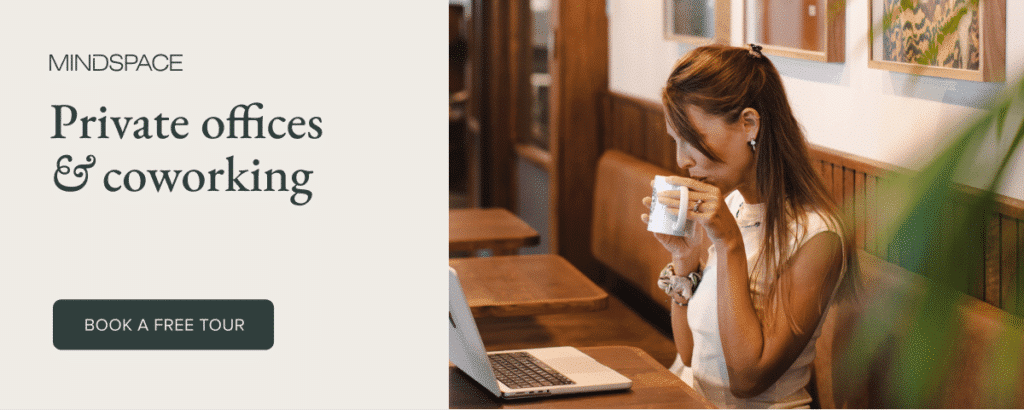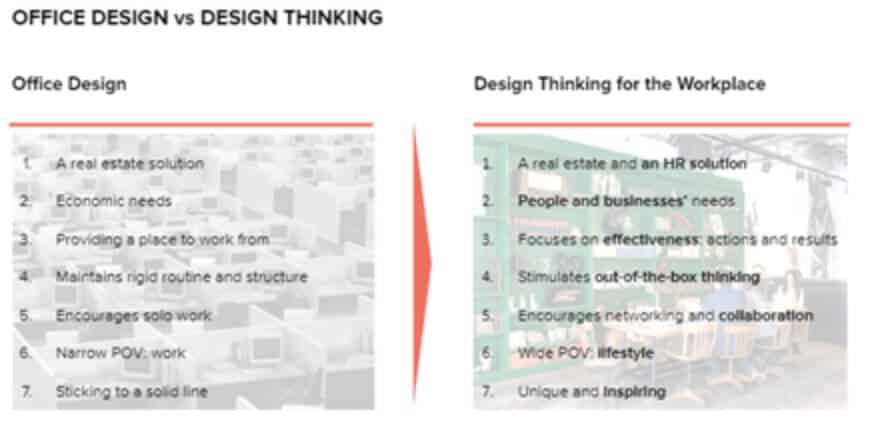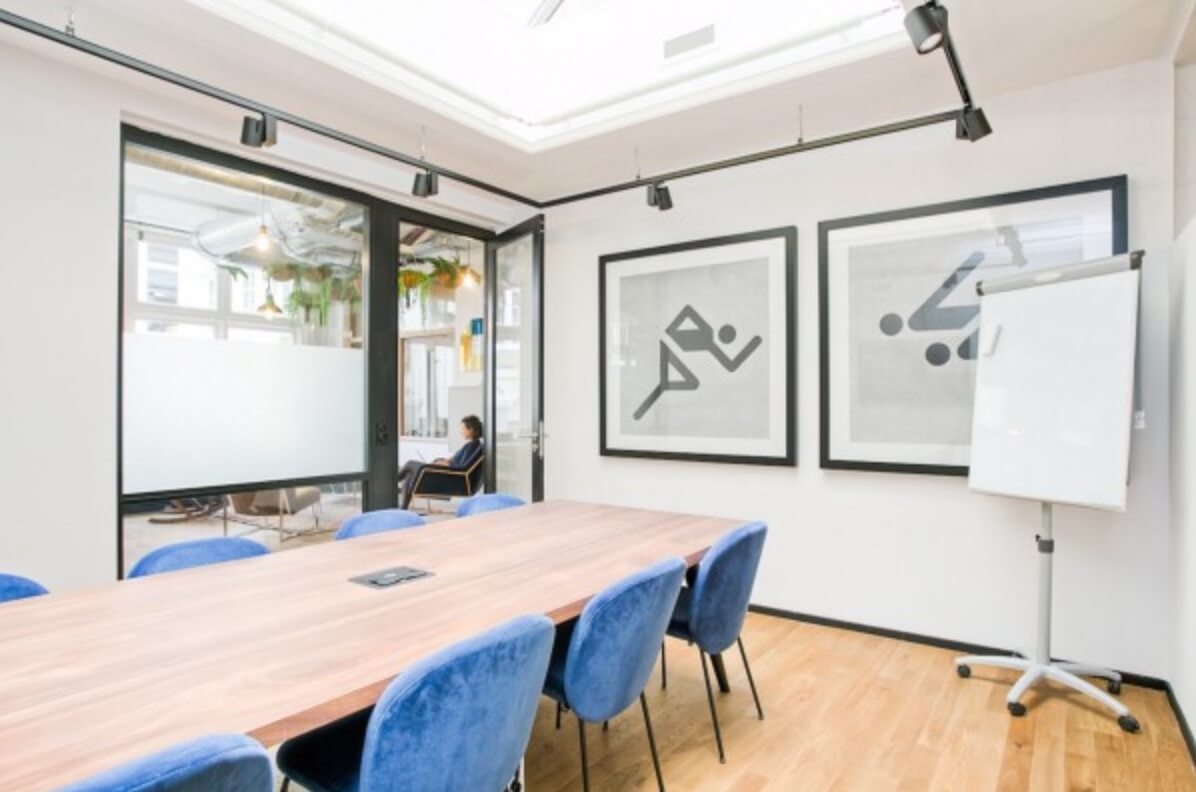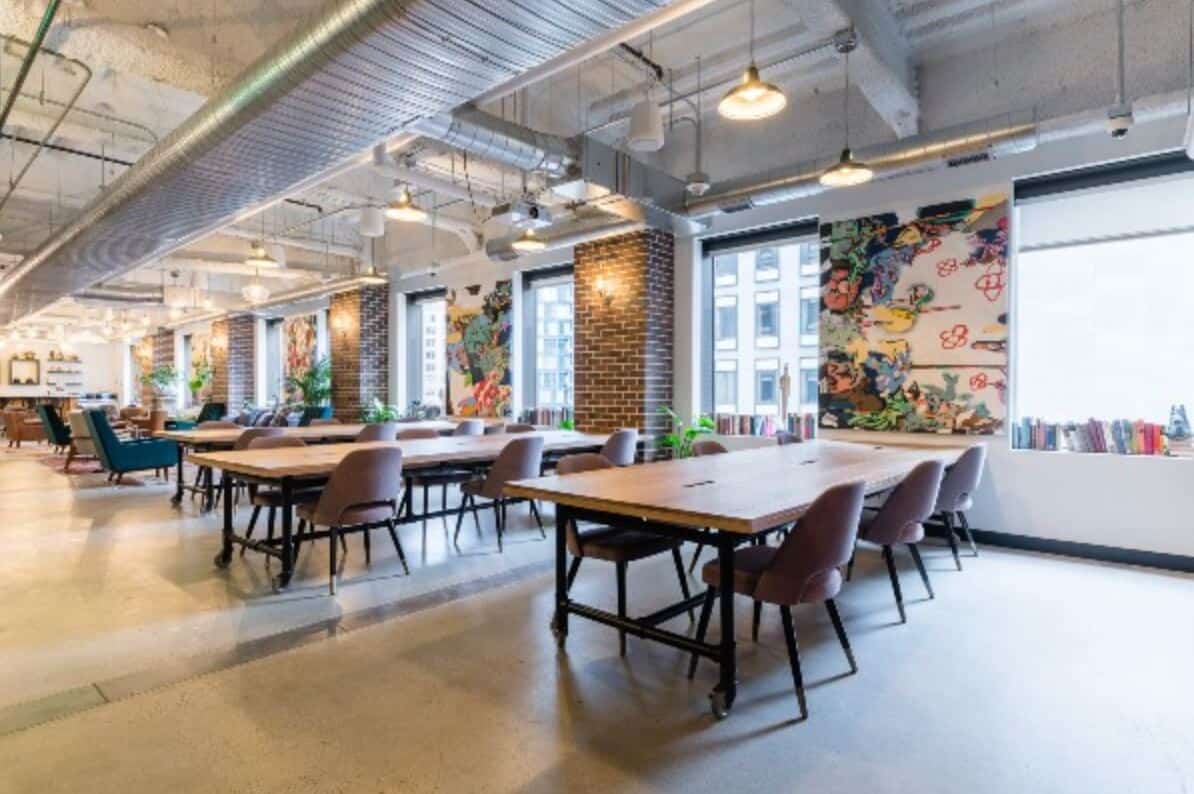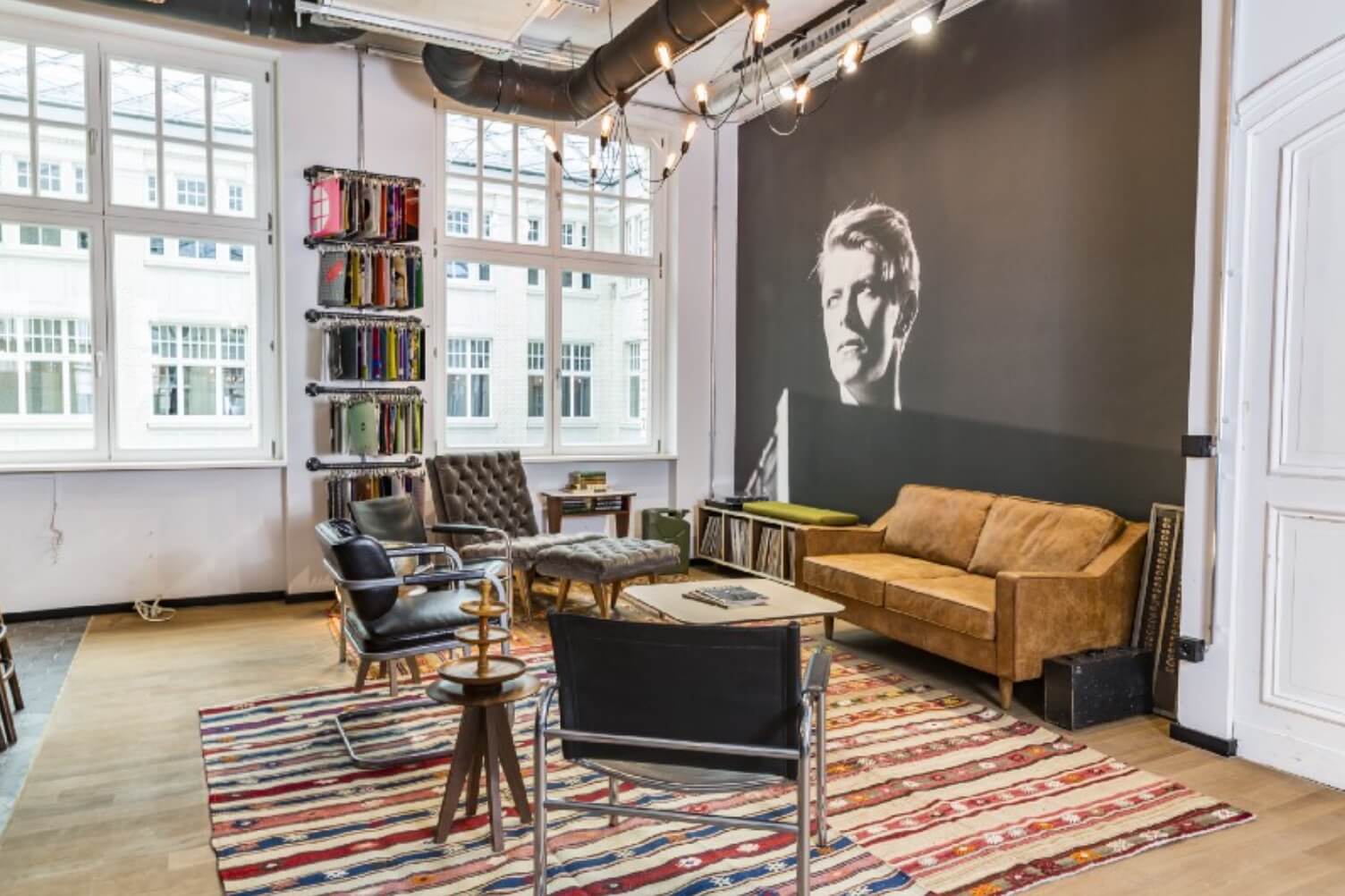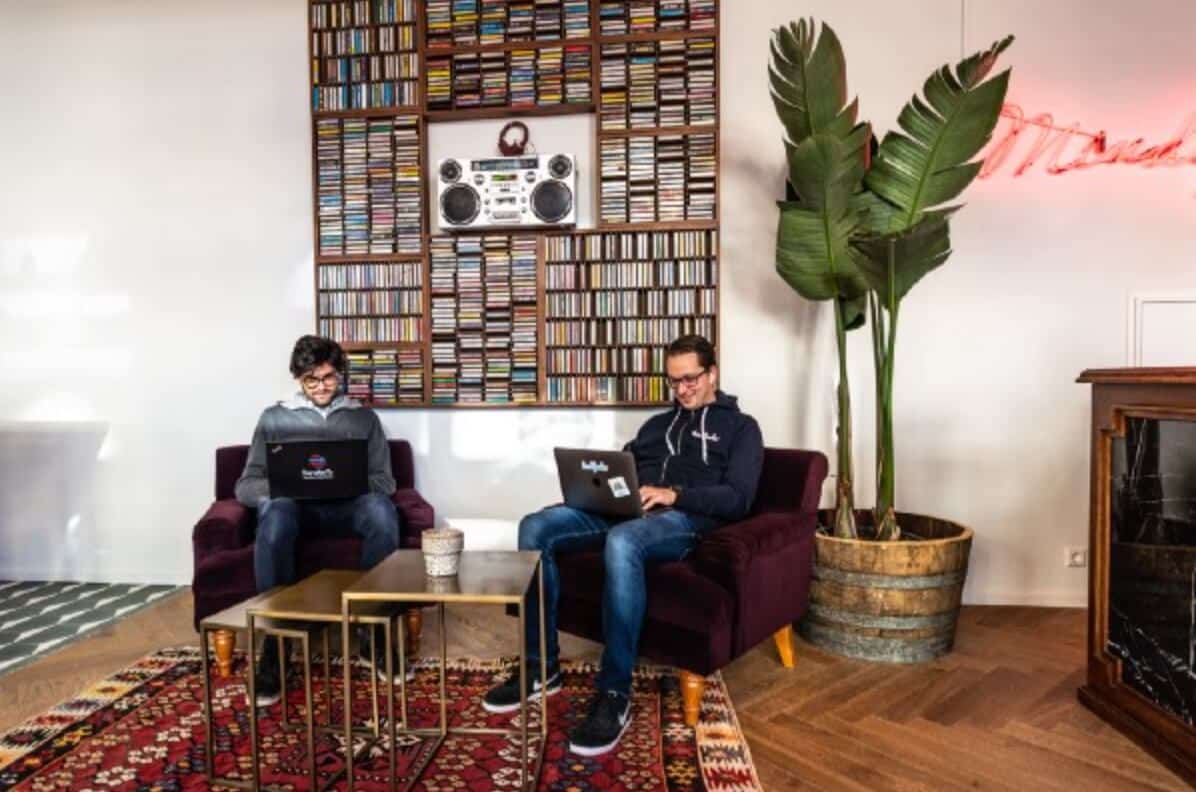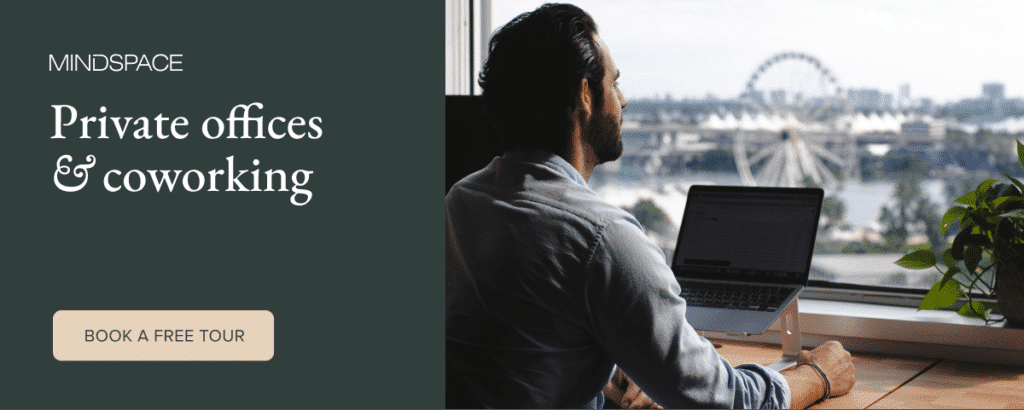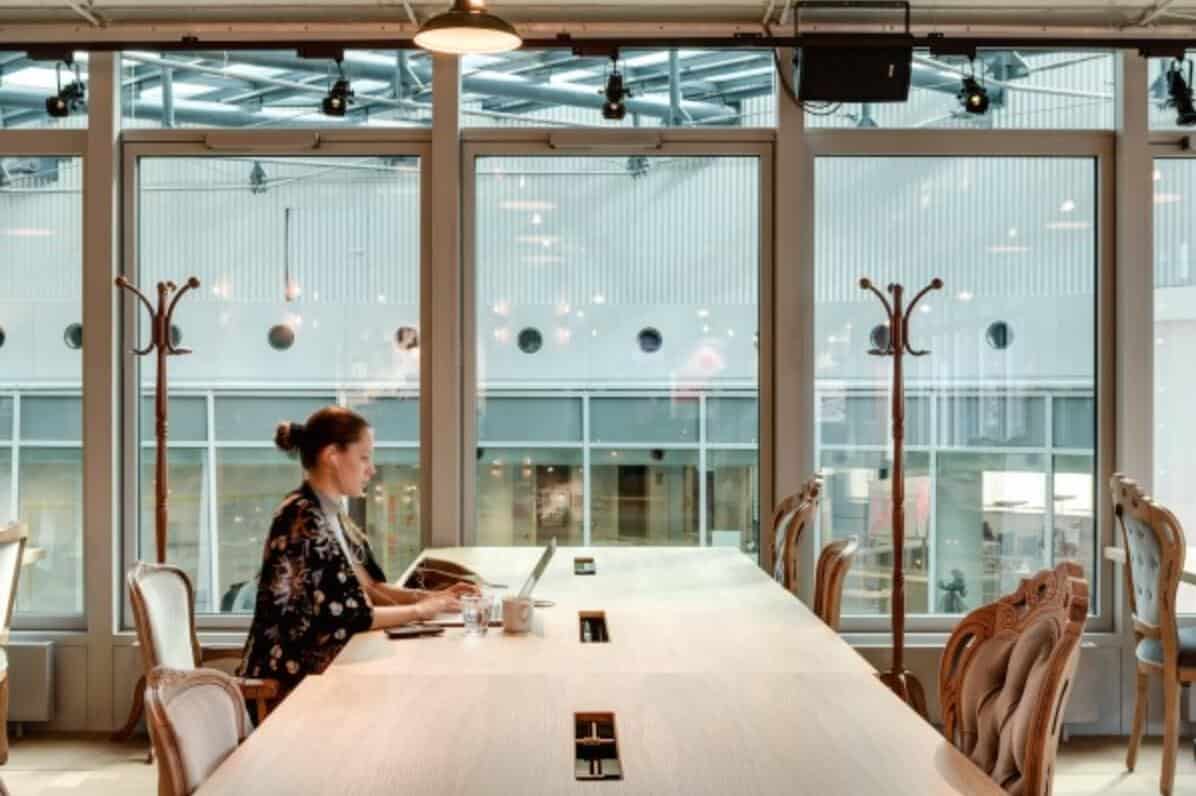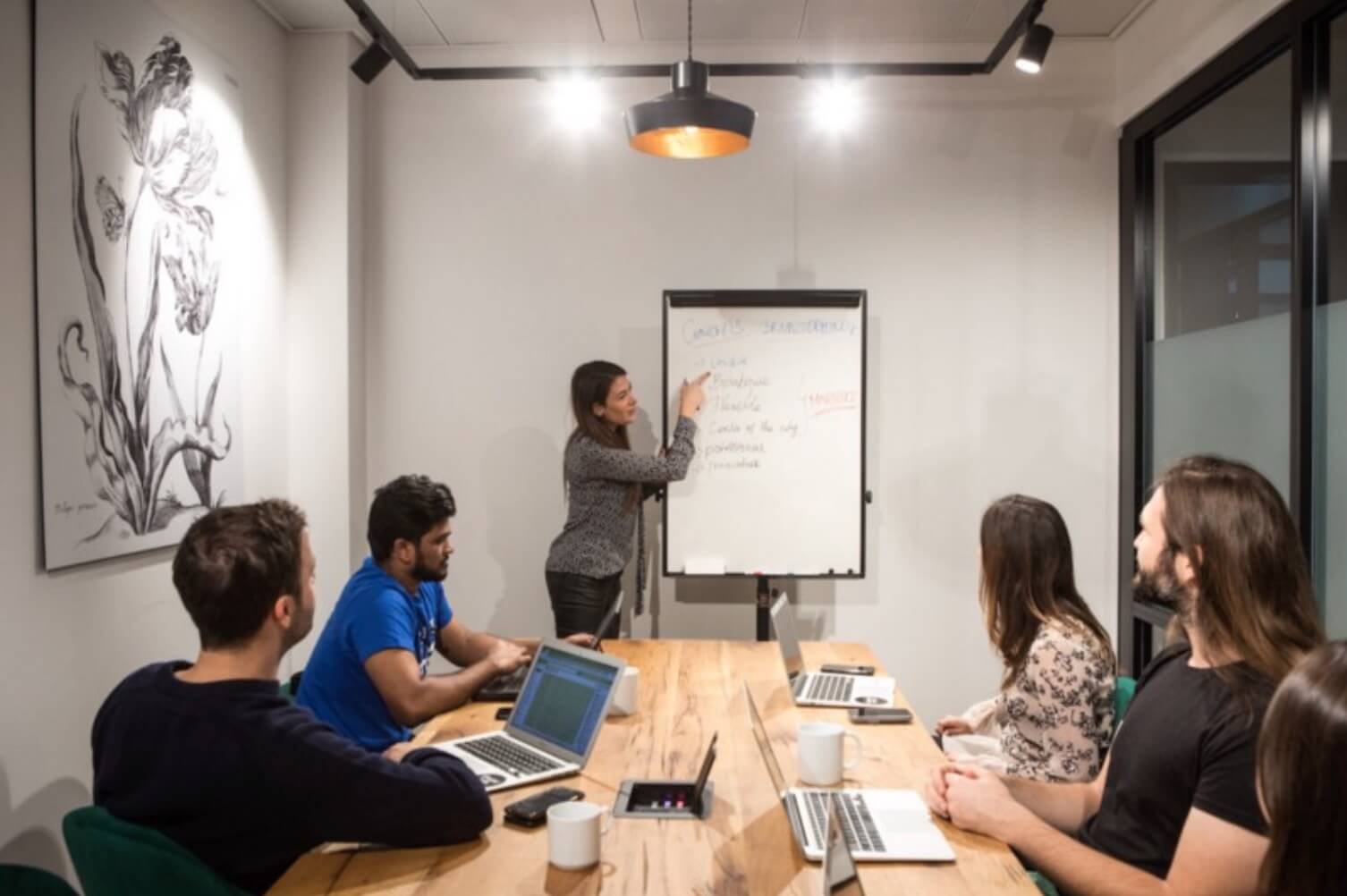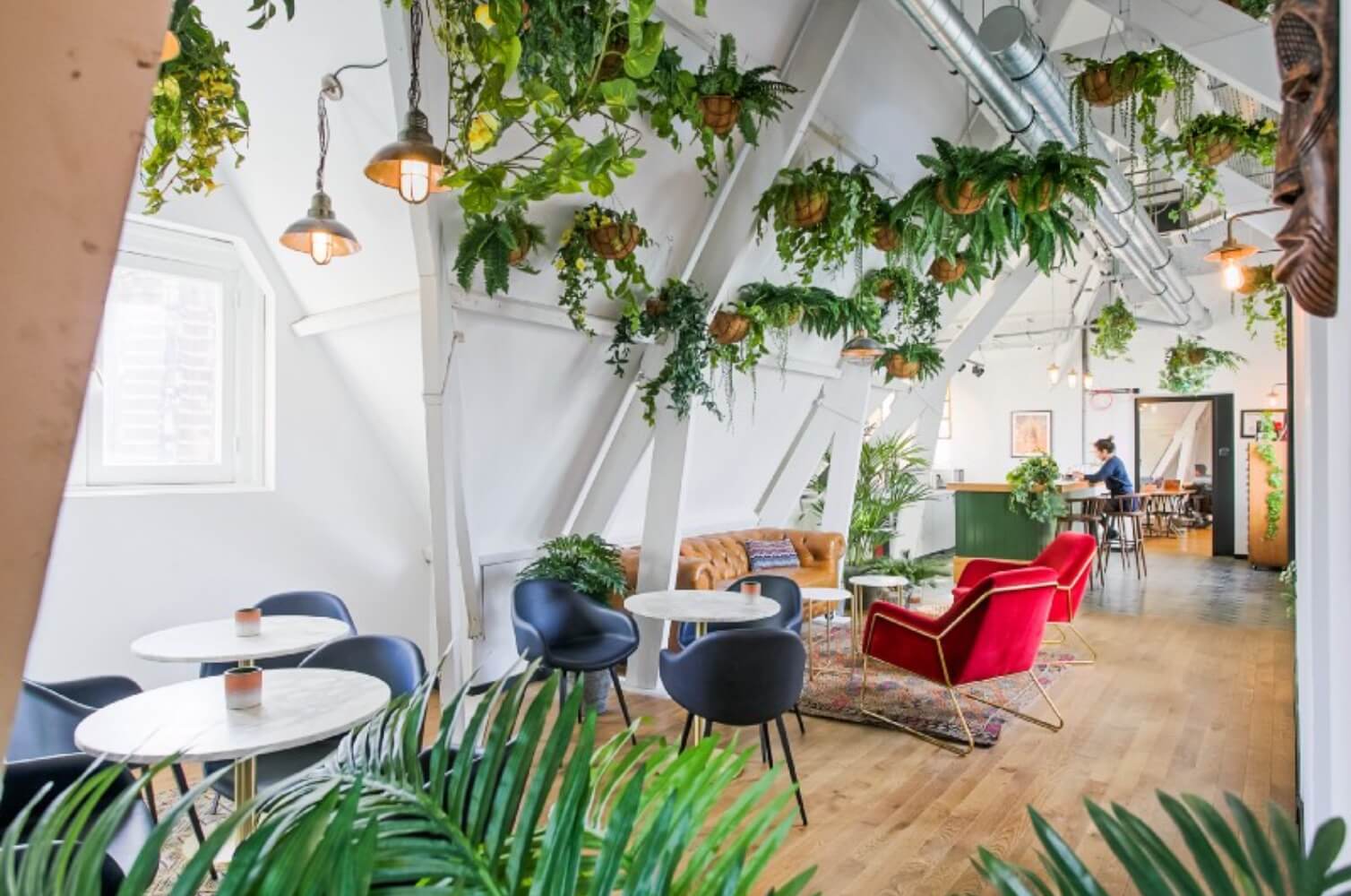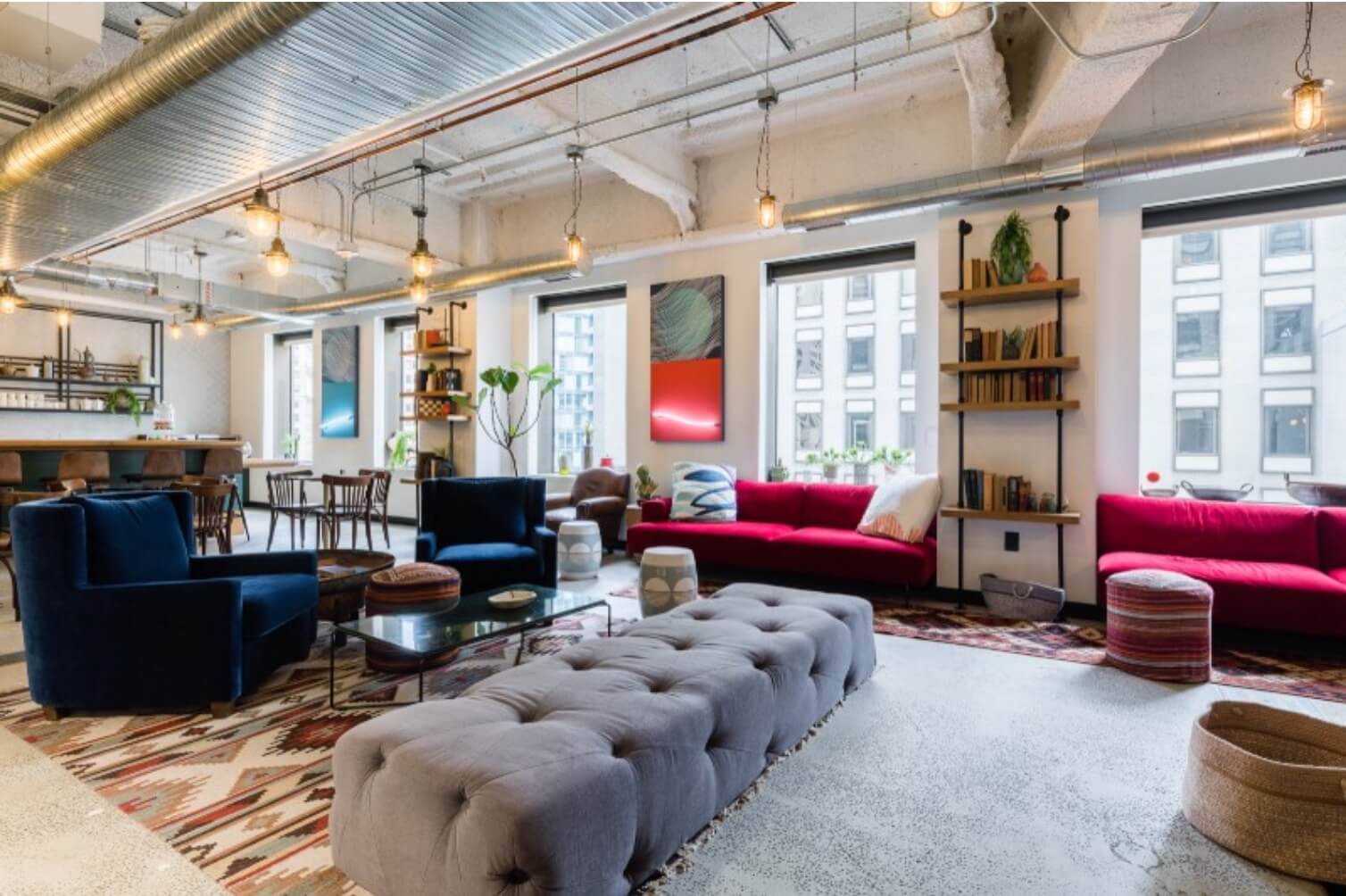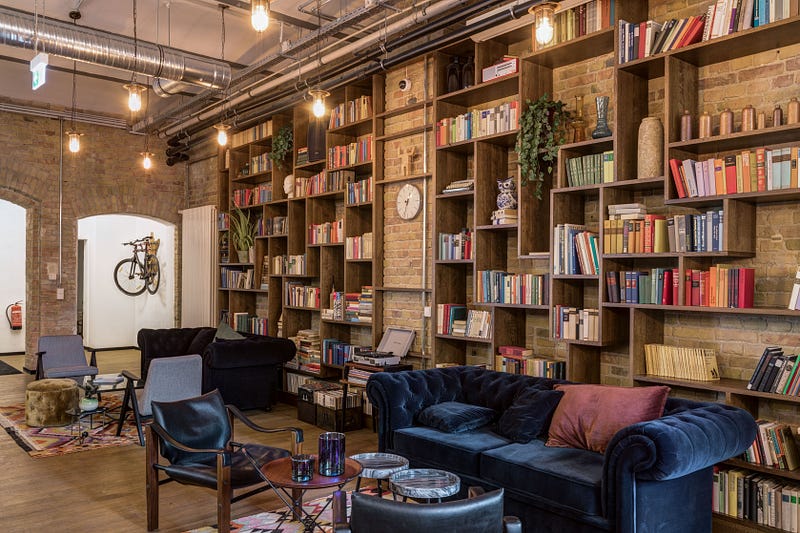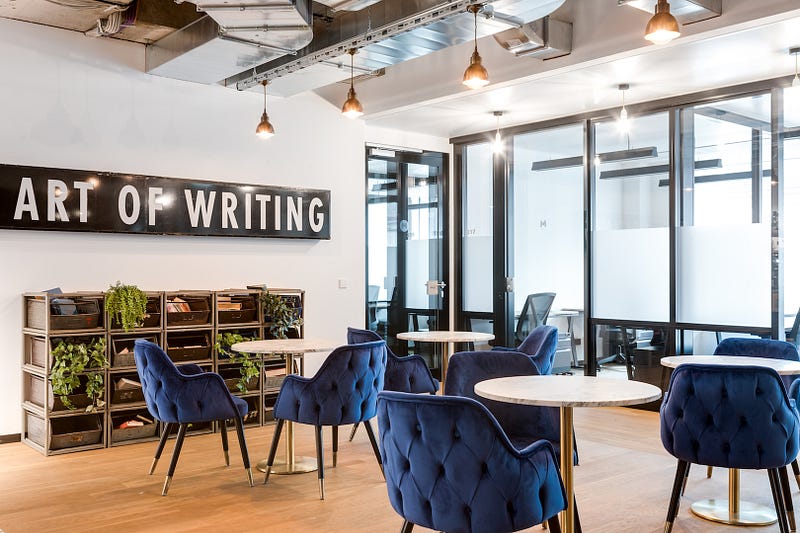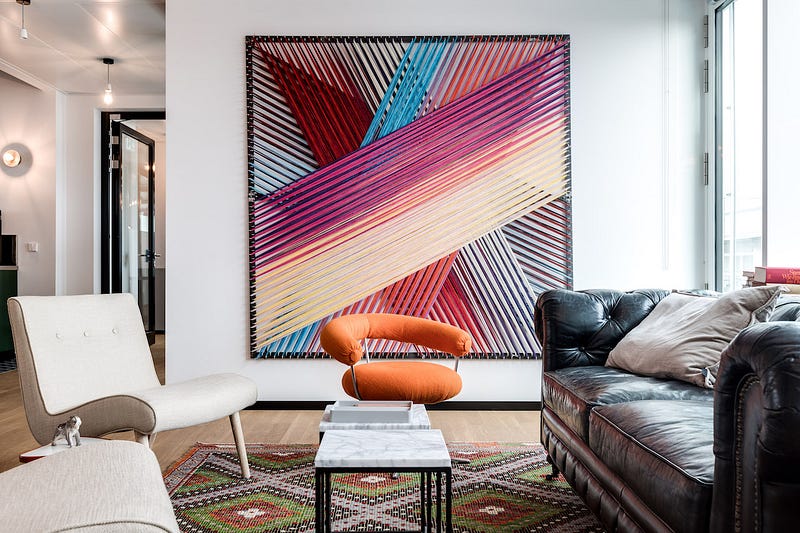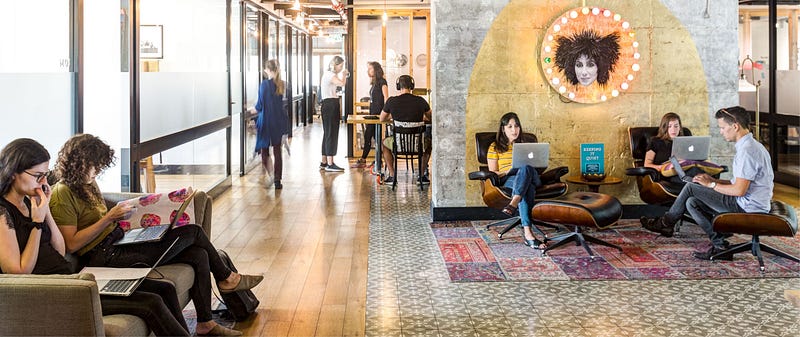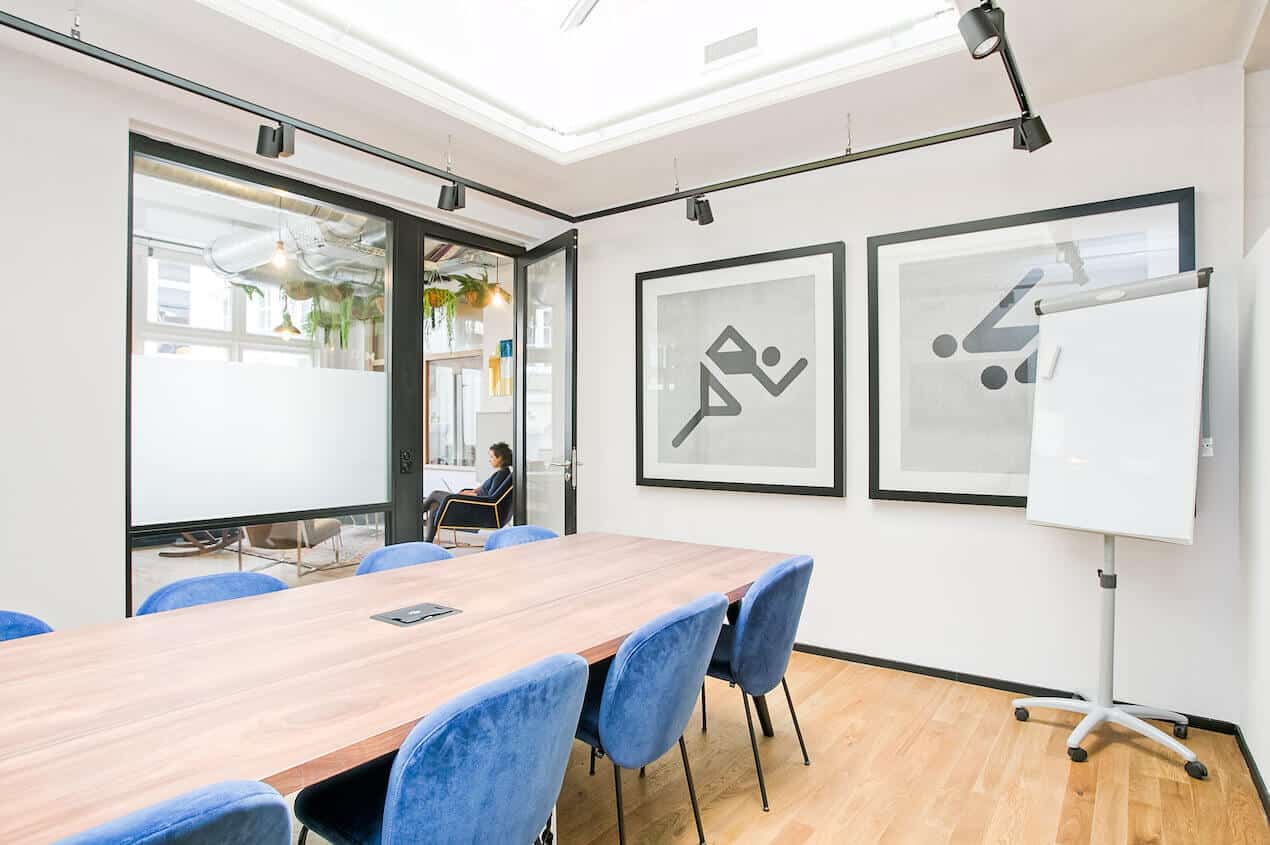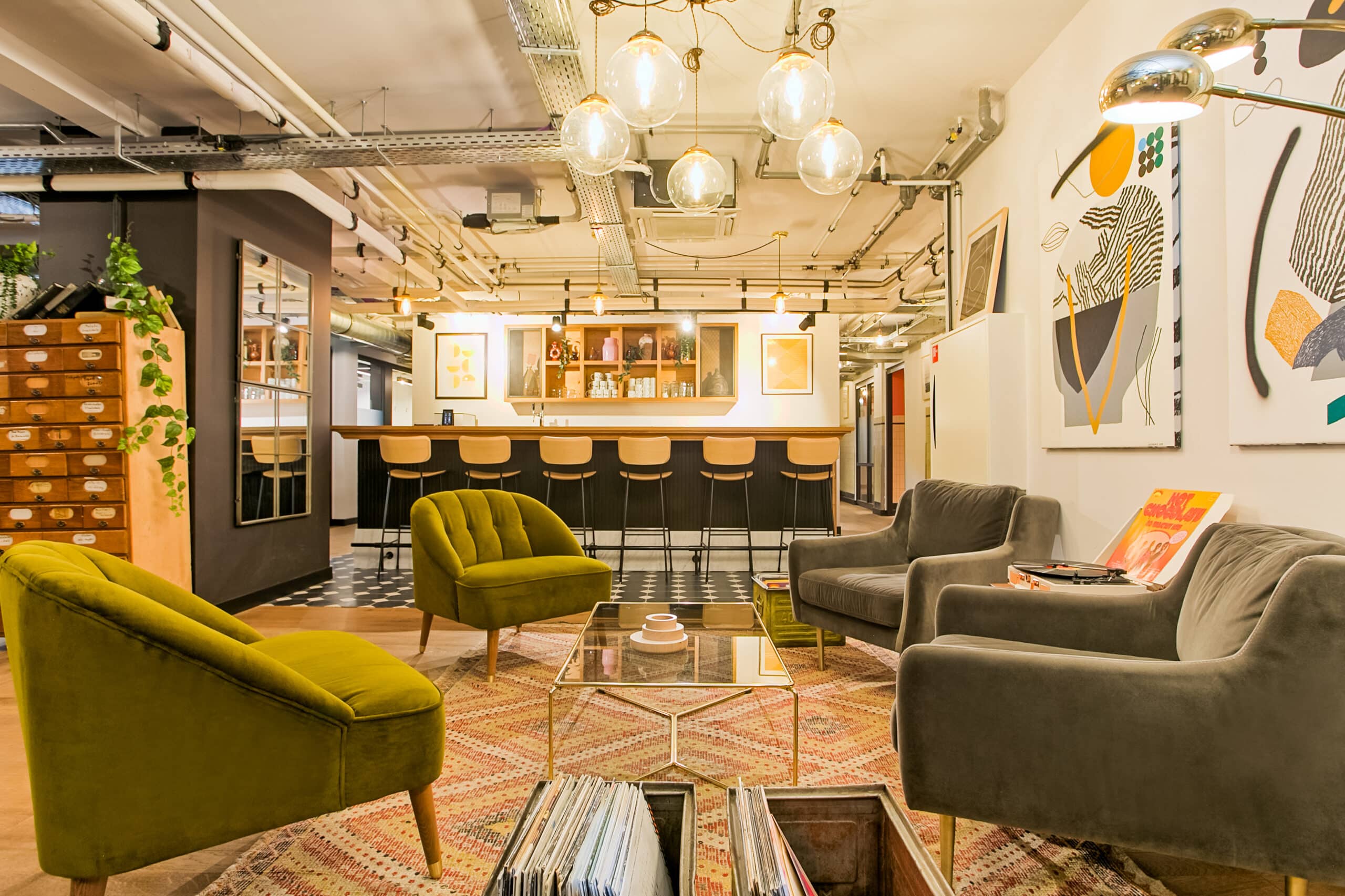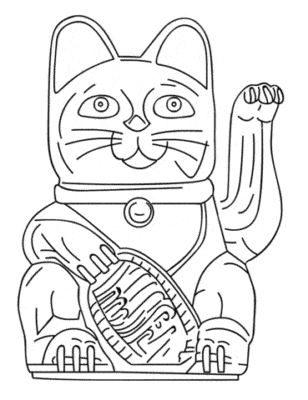Studies have shown that design-led organizations significantly outperform those that are not design-led, over the long term. Discover how your agency can integrate Design Thinking principles to catapult creativity and innovation.
When setting up a flexible office space, you may not intuitively think about how the design affects people. As long as people have a place to work, they can get things done, right?
It’s time to rethink that approach. It turns out that poor office design impacts psychology and creativity tremendously. According to the architect firm Gensler, businesses in the U.S. lose about $330 billion every year because they have poor designs that don’t meet the needs of their employees. That’s why we have put so much thought into the design of the K Street Office in Washington DC and the other U.S. Offices such as the Philadelphia Office and the office space in Williamsburg, focusing on workplace design to boost employee happiness.
Giving someone a chair, desk, and computer won’t bring out the best in that person. Luckily, a few creative office design tweaks can boost creativity and productivity to make your company more successful. The role of better interior design in office environments is crucial as it can significantly impact employee well-being, engagement, and overall job satisfaction.
From Office Design to Design Thinking
Design Thinking needs to be thoughtfully considered to bring out the best creative results in the modern workspace. Design Thinking is a methodology used by designers to solve complex problems and to find desirable solutions for clients. A design mindset is not problem-focused, it is solution-focused and action-orientated toward creating a preferred future. Under Design Thinking, the meaning of design is to create feasible ‘wholes’ from infeasible parts. Therefore, it forms an ‘AND’ not an ‘OR’ relationship. And most importantly, It’s all about how it works and not just how it looks. As Steve Jobs once said: “Most people make the mistake of thinking design is what it looks like. People think it’s this veneer — that the designers are handed this box and told, ‘Make it look good!’ That’s not what we think design is. It’s not just what it looks like and feels like.
The difference between Design Thinking and office design is clear. First, design thinking is not just a real estate solution — it is also an HR solution. A workplace that is motivated by ‘Design Thinking’ produces loyal, happy and dedicated employees. As office design is being developed from a place of revenue and profit interest, design thinking is developed out of a deep understanding of people’s, employers’ and businesses’ needs. Contrary to just providing a place to work from, it focuses on wanted actions and results to increase effectiveness. Recognizing how improvements in the workspace boost productivity, for example how standing desks benefit your productivity, it’s evident that adopting a design thinking approach to office design can have a profound impact on employee satisfaction and engagement.
Traditional office design maintains rigid routine and structure with its singular format, while Design Thinking stimulates out-of-the-box thinking, going above and beyond the obvious and inspiring workers to reinvent themselves, every day — and innovate like never before!
Design thinking in workplaces refers to a wide point of view, seeing work as an integral part of people’s life and aspiring to provide a certain lifestyle rather than a basic office. As a result, the end product is unique and inspiring. It combines different elements, gives attention to details and makes the employee feel both comfortable and intrigued.
Choose Comfortable Furniture to Boost Productivity
- Reducing injury-related absences.
- Making employees feel that their employers care about them.
- Helping workers maintain high levels of energy throughout the day.
- Reducing the number of errors that employees make throughout the day.
It’s great to have research proving that comfortable furniture can boost productivity. You probably don’t need a lot of data to understand the importance of good, ergonomically-designed chairs, tables, and workstations, though.
Imagine how much work you would accomplish if you felt uncomfortable all day. Think about how your number of mistakes would increase as you become more stressed hour after hour.
Now, picture yourself working in a comfortable location, with inspiring art on the walls, where you can move freely without aches and pains. It only takes a simple thought experiment to see why it makes sense for companies to invest in good design.
To further optimize workplace efficiency, it’s also essential to consider how coworking boosts productivity through fostering collaboration, flexibility, and a supportive community. Additionally, learning how to beat an afternoon slump in productivity by incorporating short, rejuvenating breaks or engaging in light physical activities can significantly enhance your overall work performance.
Break Areas Restore People So They Can Stay Focused
Any inspiring office design for creative agencies or the new media sector needs a good break area where employees can escape and restore. It seems counterintuitive to some managers, but you get more work from people when you give them frequent breaks.
And speaking of enhancing workplace environments, have you ever considered how music can boost office productivity? Incorporating the right music can contribute to a more conducive and energizing atmosphere, enhancing employee focus and motivation throughout the day.
Since employees don’t feel encouraged to take breaks, companies need to provide welcoming break areas where people can relax, restore, and regroup before getting back to work. For those seeking ways on how to find quiet in a coworking environment, these designated break zones can become invaluable spots to recharge and sustain productivity during the workday.
At the Mindspace flexible offices on K Street in the heart of Washington D.C., workers have access to a rooftop lounge and coffee bar as well as the numerous cafes and restaurants near One Franklin Square. An inspirational office interior that includes attractive break areas signals to employees that it’s okay to take time away from their desks. In return, you get a team of more productive, creative professionals that don’t struggle to meet deadlines.
Separate Areas for Collaboration and Silent, Independent Work
Innovative work spaces for marketing agencies need spaces where teams can get together and collaborate. When creative people have opportunities to share ideas with each other, they can develop remarkable, effective campaigns that exceed client expectations.
Clearly, your office needs an anything-goes space that allows free expression and creative thought.
What happens after the collaborative meeting, though? Often, people need to focus on their individual roles to refine ideas and turn concepts into realities. For many creative people, any disturbance can prevent them from focusing on tasks.
That’s why workplaces need distraction-free, silent spaces where employees can sit down, think deeply, and explore ideas.
Without both types of workspaces, your team will struggle to do its best. Make sure everyone has access to meeting rooms where they can laugh, talk, and feel inspired. Also, set aside rooms where individuals can work independently without interruptions.
Give Employees Natural Lighting to Help Them Concentrate
More than a quarter of employees say that they want better lighting in their workplaces. Walk into the typical American office building, and you’ll see why so many people ask for better light. Harsh fluorescent lights create unwelcoming spaces.
Research from Harvard Business Review shows that access to natural light makes employees more productive. A doctor from Cornell also finds that natural light reduces eye strain by 51%, drowsiness by 56%, and headaches by 63%.
Obviously, people can do better work when they don’t suffer from eye strain, drowsiness, and headaches. With these office lighting design secrets, you can really improve your employees’ productivity and wellbeing at work.
To make employees even more productive and creative, give them access to the natural world. That could mean views of trees, flowers, and lakes. It can also mean placing plenty of plants around the office interior. Regardless, people feel happier and more eager to work when they’re connected to nature.
Creative Office Space Design Tips of The Trade
Traditional offices expect workers to sit all day long, in the same office, on the same chair, staring at the same wall. No wonder so many people wake up every morning, dreading a boring and very grey day at work. Workers flourish in a dynamic physical environment — it’s great for focus and fosters efficiency, not to mention the contribution to the work culture.
At Mindspace we want people to both feel at home and feel utterly moved every single day. In order to get our members to open their minds, they first need to trust their surroundings and feel comfortable.
The integration of ‘both and’ thinking becomes apparent. On one hand, Mindspace is super homely. A lounging, relaxed atmosphere fills the spaces through vintage furnishings, shelves spilling over with old books and records, straight out of a Grandmother’s living room. This creates a unique charm that sets workspaces such as our shared office space in Shoreditch apart from the traditional corporate environment.
But, surfacing from the old, a progression into the future is very much felt. Mindspace is also very bold, the open set-up is fit with glass-walled private offices, and every corner is treated with a magic touch — pops of color, interesting textures — in a contemporary play on two worlds.
The selection of art in every location represents our attitude. Working with local street artists, we balance important opinion pieces with lighthearted, humorous creations.
Critical art is hung throughout Mindspace to evoke feelings and thoughts among our members. Filled with symbolism and rich imagination, they require interpretation, deep thought, and consideration. The critical art at Mindspace is not there to make members feel strange or uncomfortable, but rather to make them stop and think and add a level of depth to their experience here.
We then light the space with fun and often hilarious work. We release the inner-child in our members, with the intention of uplifting their day. We want them to laugh and smile, and look on the bright side.
Coworking is the design thinking of the office real estate industry. It is applying an innovative method that has been proven in other industries and that’s what makes it the future of work. Or in other words — it’s the Apple, and Starbucks of the office industry. How can your organization integrate Design Thinking to create the ultimate creative workspace for optimal creativity?


